Looking Back at 2025: Celebrating Joan Mitchell and Her Impact
As we close out 2025 and Joan Mitchell’s Centennial celebration, we’re reflectin...

The Joan Mitchell Fellowship Convening is the heart of the Foundation’s fellowship program—launched in 2021 to expand our former grant programs into a five-year engagement with artists. Each year, we bring the two most recent cohorts of Joan Mitchell Fellows together for three days of creative exchange, community-building, and peer learning at one of our two locations: the Joan Mitchell Foundation in New York or the Joan Mitchell Center in New Orleans.
This year’s Fellowship Convening, which took place in New York from June 5-8, offered a setting for the 24 participating Fellows to take time away from their busy lives to connect with one another. The program for the Convening included facilitated sessions on artistic legacy and storytelling, strategy, and the kinds of support we can offer and receive from one another. But just as importantly, the schedule for the gathering left space for the Fellows simply to be together—sharing meals, stories, field trips, and unstructured time—as we recognize that some of the most powerful conversations and relationships come from those in-between moments.
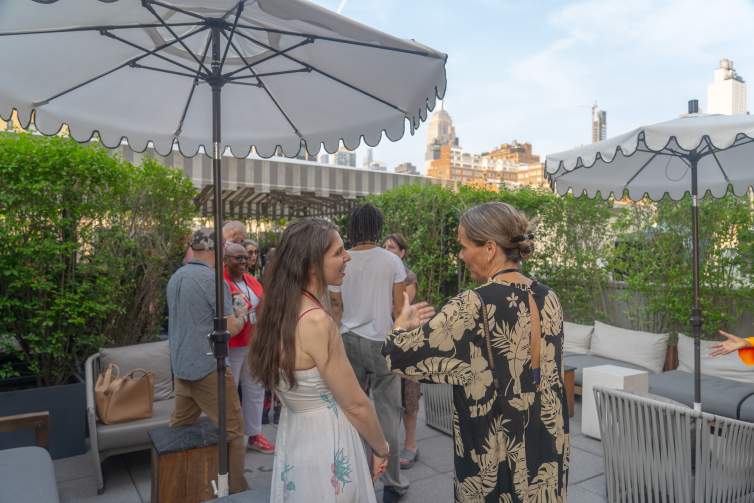
On Thursday, June 5, we welcomed the artists to the Convening with dinner and drinks on the rooftop of the Moore Hotel, amidst the backdrop of New York’s skyline.

On Friday morning, we began the Convening sessions at the Joan Mitchell Foundation’s office with an introductory exercise led by Convening facilitator Sam Morreale, based on a poem by George Ella Lyon called “Where I'm From.” After reading an excerpt from this poem, the Fellows were invited to create self introductions for the group to learn about the legacies each person brings with them.


Following the moving introductions, the artists began the Workshare portion of the Convening, in which each Fellow presented one work or project to the group in brief presentations. The artists were prompted to consider and share based on one of the following questions: What makes you uniquely you? What are you ushering into the world? What are you trying to solve? What is the current question you are asking?
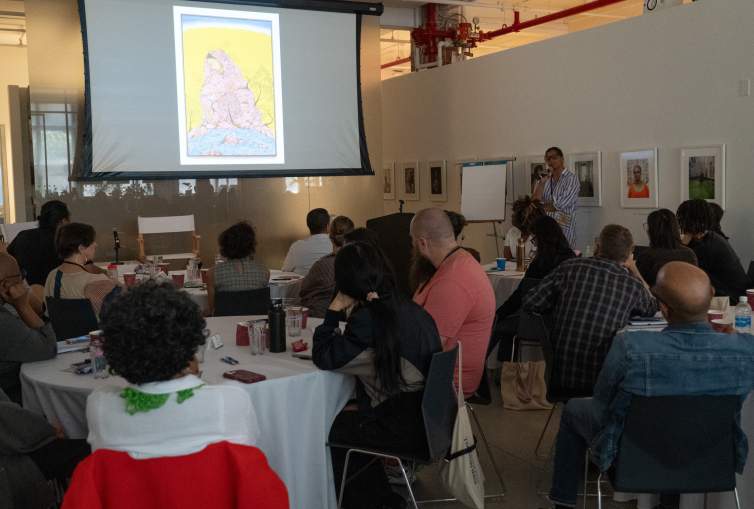

The Workshare presentations are always a highlight of the Fellowship Convenings, as the Fellows learn more about the unique practices of each attending artist. For example, Sandy Williams IV shared their recent project Authors and Architects and noted, “I see art as a practice for intergenerational healing. What should remain, what do we allow to crumble and fall?” Ana Maria Hernando presented a recent installation created with blue tulle and shared a metaphor on coming together: “I’m thinking about the intent of water. It becomes stronger as it finds more water.” Victoria Burge presented on her grid drawings, stating: “This series is a nod to unseen structures, the things that hold up other things.” Yvonne Wells brought a recent quilt project to share with the group, describing the visual elements and her working process.

After the workshares, and a lunch break, the Fellows reconvened for a session with Voices in Contemporary Art (VoCA) entitled “Interviews and Your Artistic Legacy.” Led by Jen Mergel (Esplanade Association) and Mira Friedlaender (Estate of Bilge Friedlaender / College Art Association), the workshop explored how artist interviews can be a vital tool for advocacy, legacy planning, and long-term stewardship.
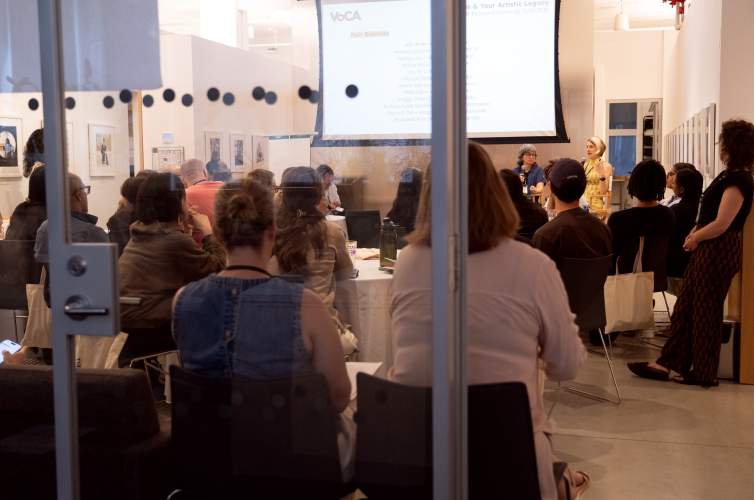
Jen and Mira presented best practices and considerations for artist interviews, and the Fellows broke up into pairs to interview each other, taking turns in the roles of interviewer and interviewee. Following this exercise, artists reported what they learned about their peers to the group and reflected on the interview experience.

Starting off the second day of Convening programming, Saturday morning’s session focused on Strategies for Artists, led by interdisciplinary artist and consultant Ela Troyano. Drawing on her own experiences as a filmmaker and an artist strategic planning consultant, Ela shared practical tools and strategies for artists navigating ever-evolving needs amidst a rapidly changing arts ecosystem.
Guided by Ela, Fellows engaged in open exchange about strategic planning, time management, and the value of having a business plan for your artistic practice. Ela also shared best practices and strategies for negotiations and led volunteers in role-playing exercises based on real-life scenarios of negotiating with galleries, museums, contractors, or other parties.


The Fellows then segued into a session called “Ask & Receive,” which utilized the Peer Learning Circle methodology for group discussion and problem solving around challenges the artists are currently facing within their practices, careers, and/or lives. Working in small groups, the Fellows identified one artist at each table to present an issue that the rest of the group would listen to, then collaboratively discuss and respond to, with specific time cues and roles assigned at the tables to structure the conversations.
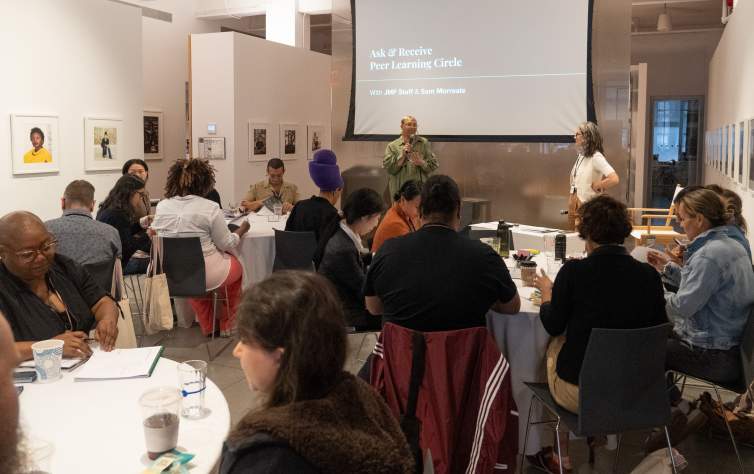
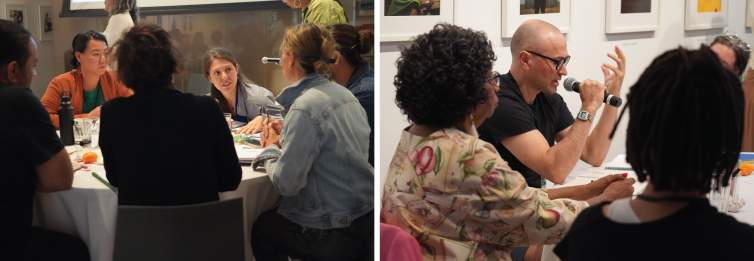
This simple but profound methodology taps into the collective experience, expertise, and perspective represented in the group of artist peers. Fellows reflected that the “Ask & Receive” session created an intimate space in which the challenges presented by one member of the table were relevant to others, and all respondents could draw on their own past experiences to share insights.
Following a lunch break, the Fellows came back together to reflect on their time together and offer gratitude to other attendees. Holding a ball of yarn, each artist shared a memory or moment of connection they experienced with another member of the group, then tossed the ball on to them, while continuing to hold a piece of the yarn.
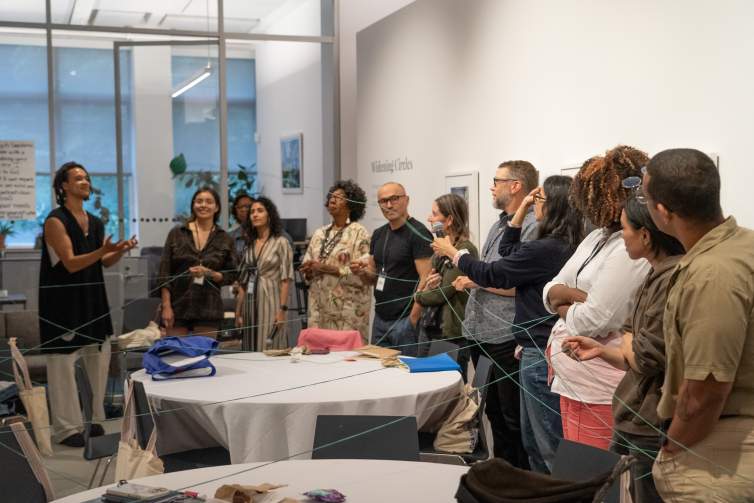
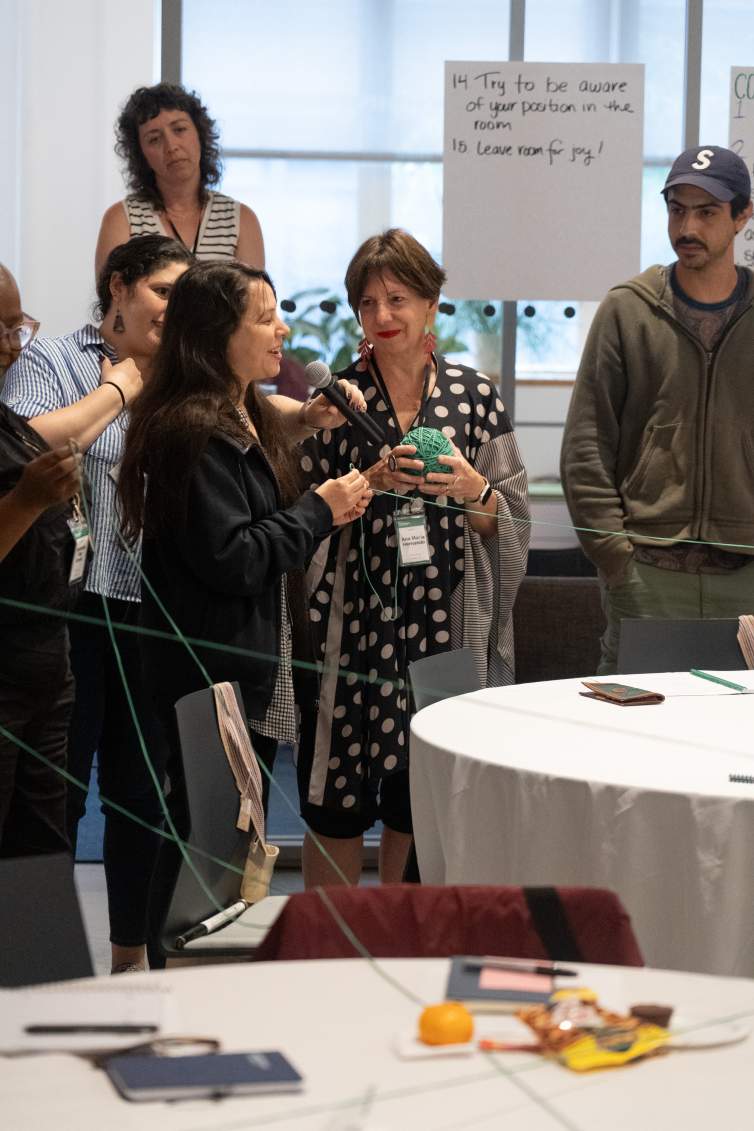
By the end of the exchange, the group had created a web that visualized the connections that had been created over the course of the Convening.

Following this moment of reflection and shared gratitude, Saturday afternoon was spent off-site for field trips to museums and private collections. One group of Fellows toured the Renee and Chaim Gross Foundation, with Director of Collections Brittany Cassandra. A second group visited the Whitney Museum of American Art for a tour of Amy Sherald: American Sublime, led by the exhibition’s curator (and Joan Mitchell Foundation Senior Director of Curatorial Affairs) Sarah Roberts. The third group went to MoMA to see Jack Whitten: The Messenger, with a tour led by Curatorial Assistant Dana Liljegren.


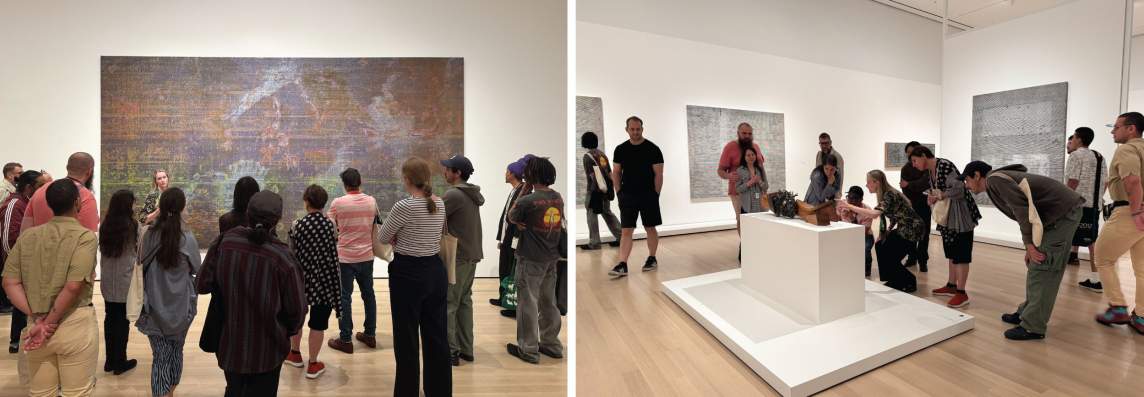
Saturday concluded with casual dinner and drinks at the Foundation’s office to close out the day and mingle with local arts professionals. In recognition of Joan Mtichell’s centennial, and to further connect the Fellows with Mitchell’s life and artistic practice, the group screened Marion Cajori’s 1992 film, “Joan Mitchell: Portrait of an Abstract Painter.”
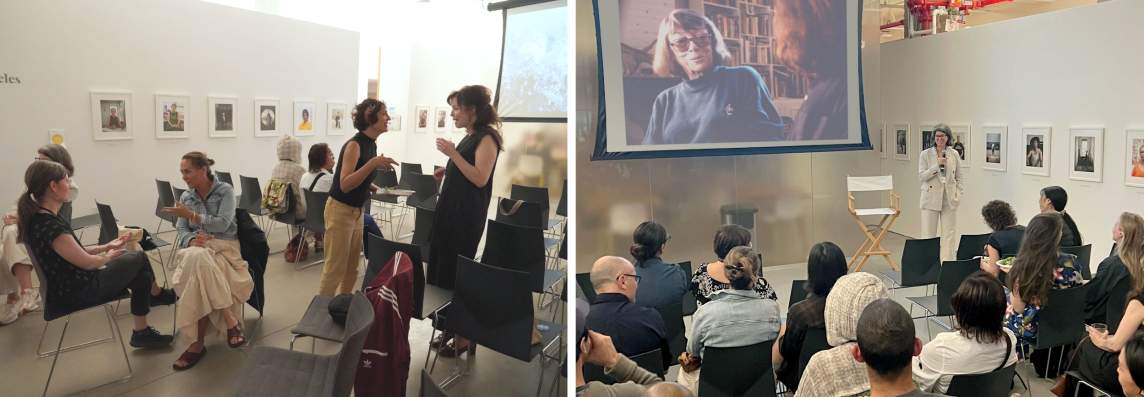
Reflecting on this and past convenings, we know that these precious moments of in-person gathering and exchange can carry forward throughout the years to come, and we provide regular virtual opportunities for the artists to be in conversation with one another over the five-year engagement of the Fellowship. As 2023 Fellow Naomi Safran-Hon noted, “I am so grateful for this fellowship. Of course the funds are significant, but connecting with other artists has been really important for me." We at the Foundation continue to listen and learn from each gathering as we co-create the Fellowship program with and for the artists in our community.
All photos by Foundation staff Melissa Dean, Sarah Dhobhany, Dani Reuben, and Jenny Gill. Learn more about the Joan Mitchell Fellowship here.